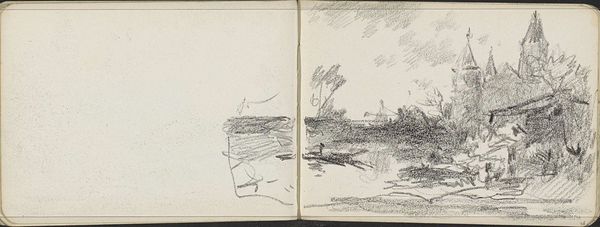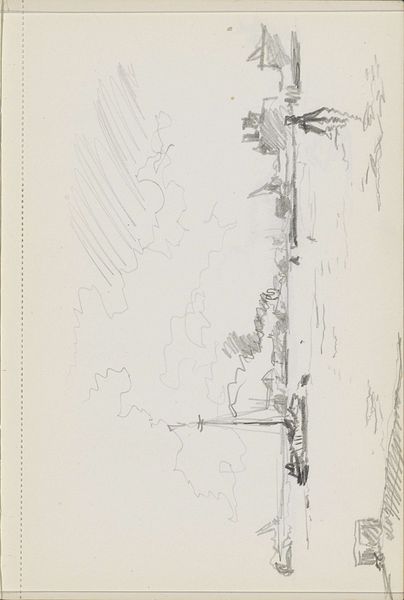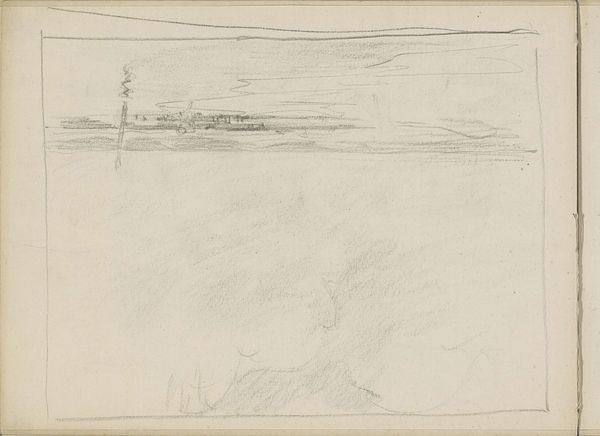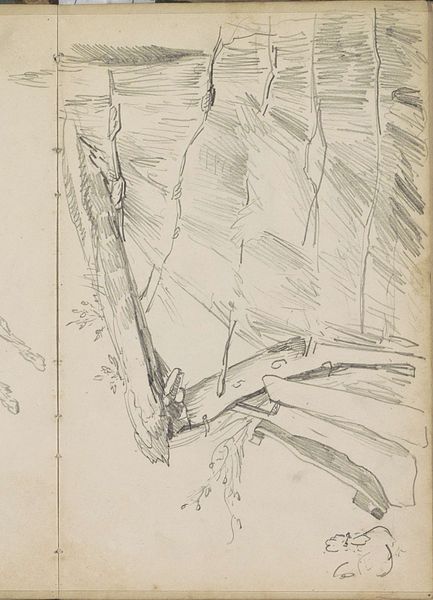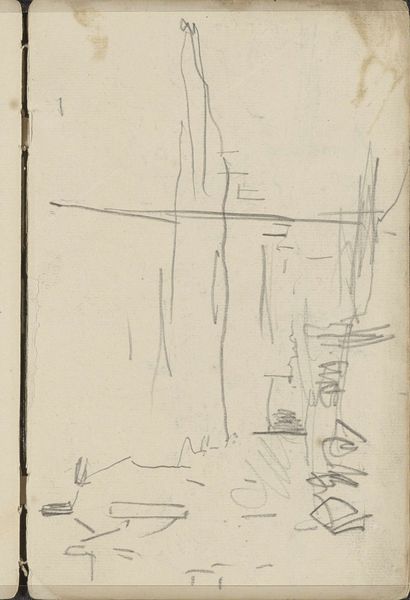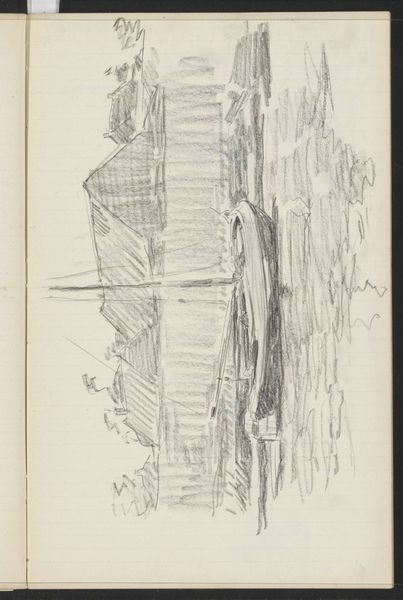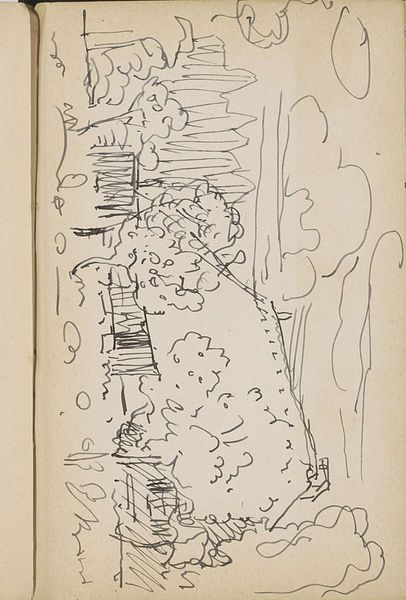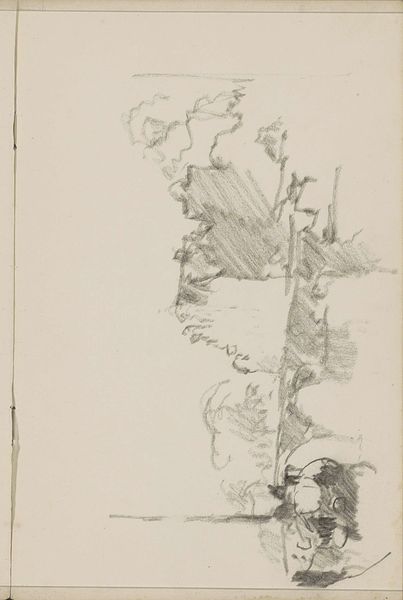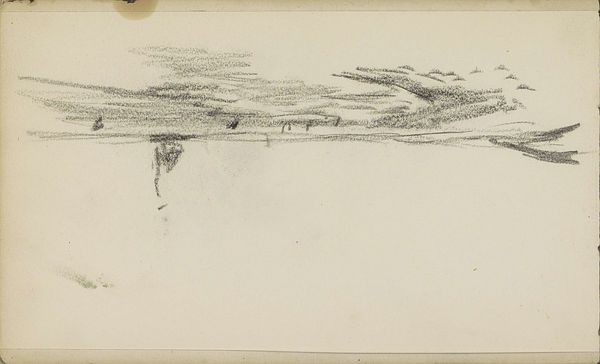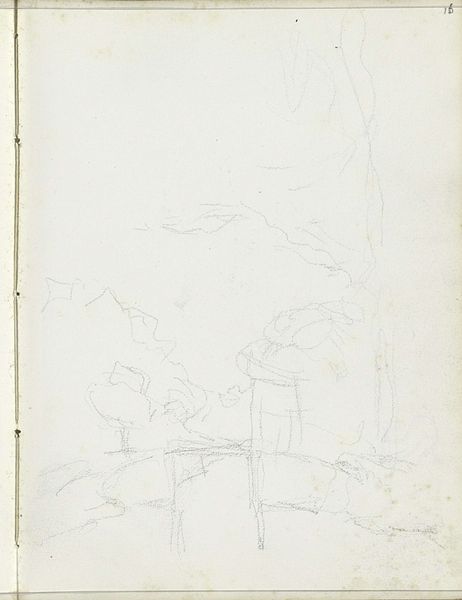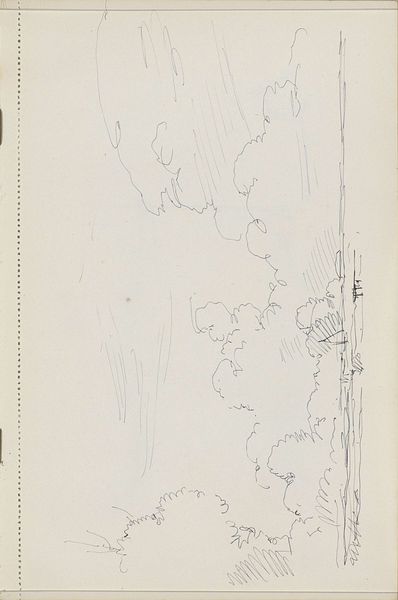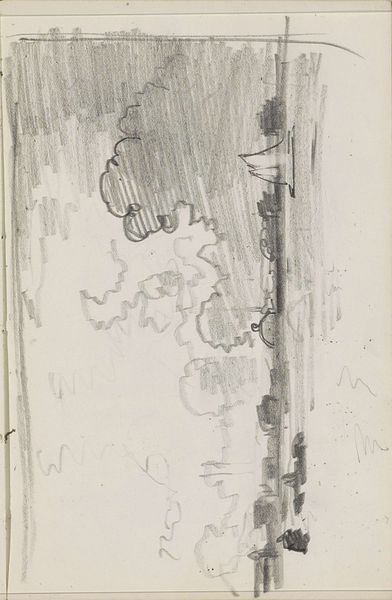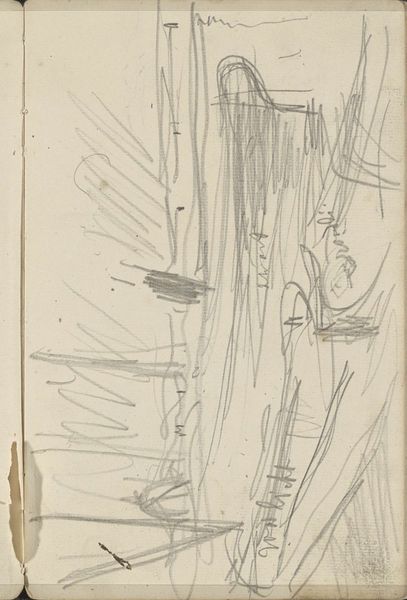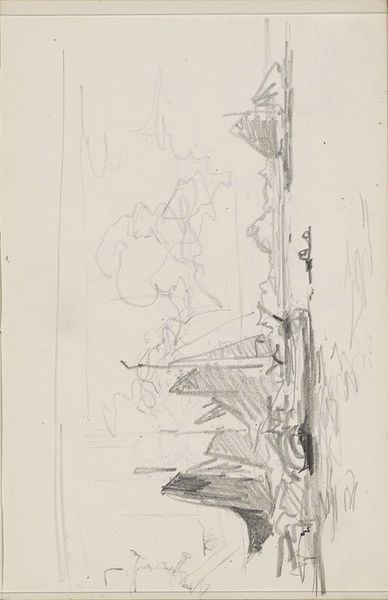
Copyright: Rijks Museum: Open Domain
Curator: Here we have Cornelis Vreedenburgh's "Waterkant," a pencil drawing that, despite being created between 1890 and 1946, possesses a distinctly Impressionistic feel. What strikes you most about this piece? Editor: Immediately, there’s a sense of quiet desolation. The composition feels sparse, almost incomplete, like a memory half-forgotten. The stark contrast between the roughly sketched land and the vast blank space at the bottom is quite unsettling. Curator: I see what you mean. The use of pencil—a medium so closely associated with preliminary sketches—enhances that feeling of transience. I think of the pencil medium relating to a collective remembering of place. A desire for something beyond that blankness you noticed. Editor: Absolutely. It prompts reflection on marginalized histories related to the waterfont as a point of departure and arrival. The minimal detail almost universalizes the experience. There could be migrants, laborers, all reduced to these fleeting strokes. Curator: Indeed, one might interpret the heavy horizon line, nearly bisecting the composition, as a symbolic representation of the weight of expectation of access that has long been afforded to those associated with waterways across eras. Editor: And those almost skeletal structures hanging above… do they suggest docks, or some kind of ruined infrastructure? Either way, they speak volumes about labor, industry, and their precarious relationship to the natural environment. It suggests exploitation, right? Curator: It does open to that interpretation, although I would argue that the very ambiguity of the image prevents a single conclusive reading, allowing the viewer to project their own experiences and perhaps even their own traumas onto the work, mirroring the way cultural memory itself operates. Editor: A fair point. The power of the piece truly lies in its openness. That space at the bottom begs for narratives that have often been silenced, almost mocking our expectations of a fully resolved scene. Curator: This drawing prompts contemplation on the cyclical nature of history and visual culture, a poignant example of how images preserve what societies seek to commemorate and, conversely, elide. Editor: So true, and perhaps it asks us, too, what mark we wish to leave on our own cultural landscapes, or in other words, what will we commit to drawing. Curator: Beautifully said. Thank you.
Comments
No comments
Be the first to comment and join the conversation on the ultimate creative platform.
